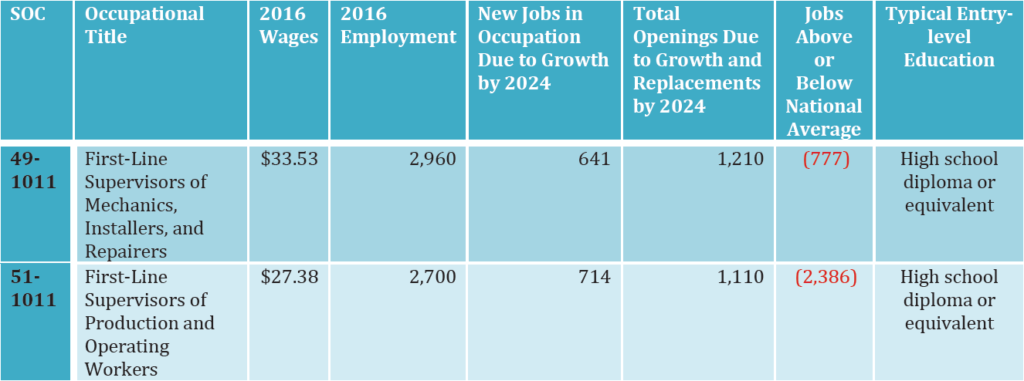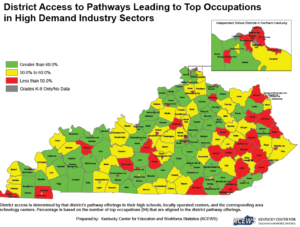Earlier this month, Advance CTE released a Credit for Prior Learning Messaging Toolkit in partnership with Education Strategy Group and the New Skills ready network. This toolkit provides guidance and templates to help state leaders develop key messages that engage and communicate the value and use of Credit for Prior Learning (CPL) to adult learners, postsecondary faculty and staff and employers.
 This post interviews Community College of Vermont’s Director of Prior Learning Assessment, Melissa DeBlois for insights on the need for this resource and how communicating CPL is realized at the institution and learner level.
This post interviews Community College of Vermont’s Director of Prior Learning Assessment, Melissa DeBlois for insights on the need for this resource and how communicating CPL is realized at the institution and learner level.
In our conversation, Melissa shared how CCV’s simple, yet effective strategies have been deployed to empower and support adult learners in returning to the classroom to complete their degrees.
When and why was the Office of Prior Learning Assessment established?
The Office of Prior Learning Assessment was established in 1975 in response to the need for a formalized process that would reconnect adult learners by awarding postsecondary credits for previous academic or work-based experiences.
Who do you consider to be your core audience for communications regarding Prior Learning Assessment / Credit for Prior Learning (PLA/CPL)?
Our primary audiences are students and employers. We find that students aged 25 and up and those with military connections are particularly successful in PLA/CPL because they often already have some learning that could be documented through the PLA/CPL process.
While employers are eager for resources to help upskill their employees, I’ve also had senior leadership approach me after leading a session to ask about whether PLA could help them complete their degrees. We foster a culture where these tools and resources are open and available without shame or judgment for anyone to take advantage of.
Which communication strategies would you consider to be exceptionally high-impact?
Social media and digital marketing are huge for us. Our marketing department utilizes data to determine which platforms have the greatest impact to get information in front of our audiences. We developed some short, pathway-specific videos that feature stories of program alumni. Sharing personal perspectives has been incredibly effective for connecting with our adult population as they are able to see themselves in these campaigns and it encourages them to dream about where they could go with their learning.
Our admissions department sends automatic messages to everyone who applies. Our software has the capability to send texts and emails, but our method depends entirely on the contact information that the learner has provided to us. On the day they apply, they receive a message from me asking if they have an interest in saving time and money on their path to a degree, and it has been a pretty effective way to target folks.
Webinars have also been effective communication tools for reaching our audiences. Now that people are more familiar with Zoom, they have the opportunity to access this information in a way that they weren’t able to before.
Are strategies differentiated based on the PLA program/initiative or target audience?
In December 2020, we developed new competency-based PLA options specific to early childhood education. We were able to generate a mailing list of all registered childcare centers in the state and sent out informational fliers and contact cards to post in their break rooms. While this approach was low-tech, it specifically catered to the individuals working at the center by placing our fliers on staff bulletin boards in break rooms or common spaces they’d be seen every day.
How have your strategies changed over time?
We collect data from those who enroll and those who attend our informational sessions. We ask them about their takeaways from the session to better understand what the most relevant pieces of information were for them. I find that there are a lot more folks who are interested in learning a little bit more before they’re actually ready to devote the time and energy to enroll in courses. We’ve seen that they are exploring well in advance, and it can often take them months or sometimes years to follow through while they make arrangements to fit college into their already full lives.
Were there additional surprises or pushback to this program that your team wasn’t anticipating? If so, how did you mitigate these?
PLA is complicated, and I’ve seen students struggle when they try to navigate it on their own. Our adult learners do not want to be on hold, but being short-staffed means that our capacity to serve learners is a challenge. This population doesn’t want to be bounced around from office to office. They want to talk to one person to help them figure out what they need to do and get started. We’ve addressed this by prioritizing in-person sessions where I can interact in real-time and answer their questions. We wrote PLA into CCV’s strategic plan, so expanding opportunities for our adult learners are included in all of our goal-setting as it’s part of the DNA of our institution.
Another challenge in PLA/CPL is the acceptance and transferability of credits. I’m hopeful that more institutions will be open to prior learning assessed credit because they need to in order to stay afloat. They need to recognize that adult learners come with experiential learning with a college credit value, and I think we’re moving in that direction.
Finally, as a community college, we don’t have a lot of funding available so we need to get creative about how to fund these initiatives, not on the backs of tuition dollars for our students.
What recommendations do you have for other states seeking to increase engagement and improve communication around CPL?
I have three pieces of advice:
- Profile your successful students. It is important for students to be able to see themselves in this process.
- Be patient with the process. Adult learners need time before they’re ready to approach PLA/CPL with an open mind and trust that they can find success through this process.
- Find your champions. Whether it’s students, faculty or employers. Word of mouth is pretty powerful in this process. We can do all the videos and profiles and all that kind of stuff, yet I still hear from students who actually enroll that they say they were referred by a friend.
What is the future of credit for prior learning in Vermont?
We’ve seen a lot of promise in competency-based pathways. We’ve broken down courses into modularized content that will allow folks to test out and complete assignments on their own without having to sit through an entire class. The response has been positive, and we’ve developed 12 competency-based pathways that are very popular for meeting the needs of learners at all kinds of places in their career paths.
Visit Advance CTE’s Learning that Works Research Center for additional resources about credit for prior learning, including the Embedding Credit for Prior Learning in Career Pathways Policy Benchmark Tool and the newly released Credit for Prior Learning Messaging Toolkit.
Amy Hodge, Policy Associate
Melissa DeBlois is the director of the Office of Prior Learning Assessment and a member of the Prior Learning Assessment Network. In her role, Melissa coordinates and provides outreach efforts, hires faculty for portfolio reviews, course challenges, and ETES program reviews, trains faculty to teach portfolio courses, provides information to a variety of audiences via presentations, documentation, videos and webinars, and facilitates portfolio reviews. She spent the first 18 years of her career at the Community College of Vermont. Before working in prior learning assessment, she was a coordinator of academic services for the CCV-Burlington, then CCV-Winooski, academic teams. She has reviewed and developed computer degree programs on the Technology Curriculum Committee for the last 15 years. Melissa holds a bachelor of arts from St. Lawrence University and a master of education with a focus in technology integration from St. Michael’s College.


 Meet Stacy Whitehouse! Stacy is the Senior Associate for Communications and State Engagement at Advance CTE. Stacy works to develop and implement communications and outreach strategies that support state CTE leaders. Some of her most recent initiatives include communications research for
Meet Stacy Whitehouse! Stacy is the Senior Associate for Communications and State Engagement at Advance CTE. Stacy works to develop and implement communications and outreach strategies that support state CTE leaders. Some of her most recent initiatives include communications research for 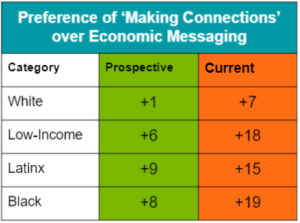 These findings have important implications for how CTE can close equity gaps, as well as what aspects of CTE should be elevated when conducting outreach to historically marginalized populations. Communications should be specific about the equitable opportunities provided through CTE to prepare for and jumpstart postsecondary education, as well as to gain visibility and networks through connections and hands-on experiences with like-minded educators, peers and employers .
These findings have important implications for how CTE can close equity gaps, as well as what aspects of CTE should be elevated when conducting outreach to historically marginalized populations. Communications should be specific about the equitable opportunities provided through CTE to prepare for and jumpstart postsecondary education, as well as to gain visibility and networks through connections and hands-on experiences with like-minded educators, peers and employers . 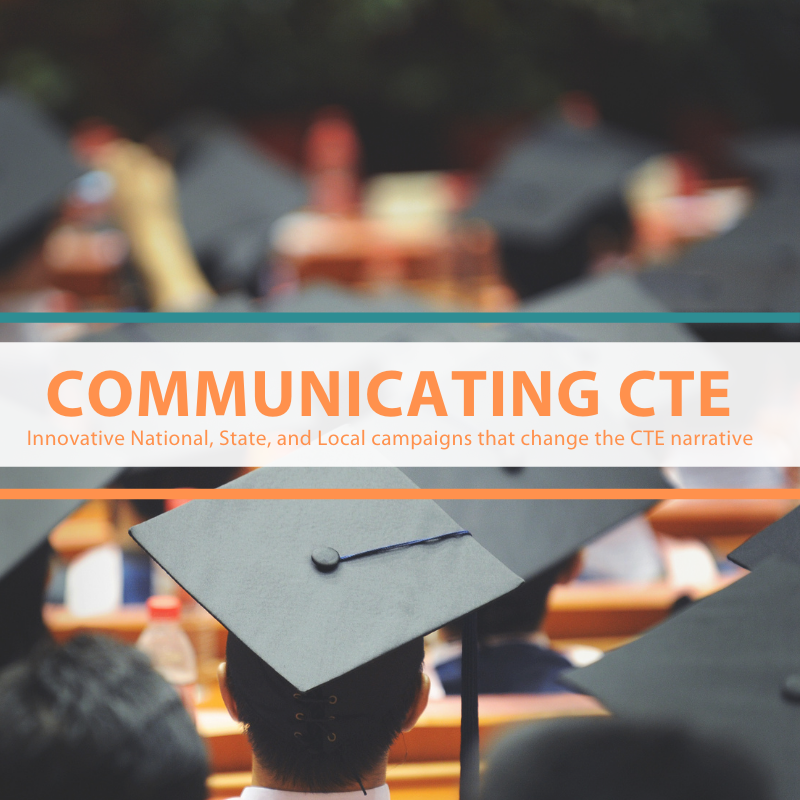 In April 2021, Advance CTE released
In April 2021, Advance CTE released 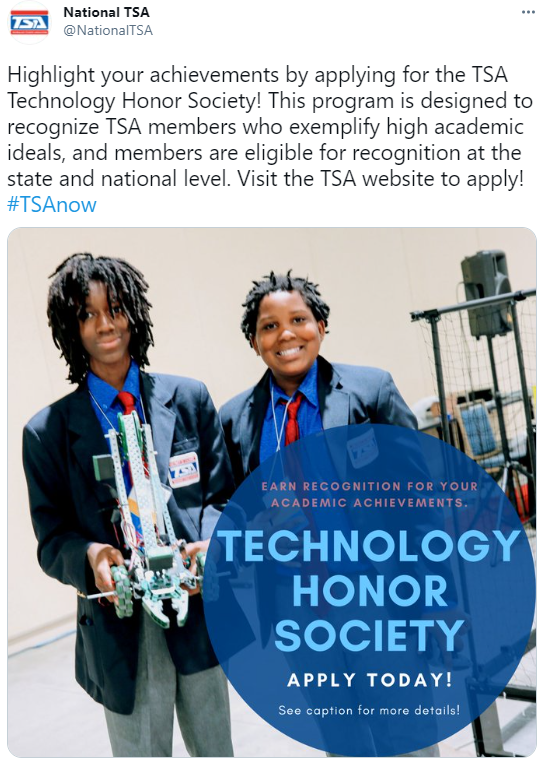 With a focus on recruitment and retention, it is important for learners and families of CTE to see success stories of individuals who look like them and share similar educational, racial, socio-economic, gender and geographic backgrounds.
With a focus on recruitment and retention, it is important for learners and families of CTE to see success stories of individuals who look like them and share similar educational, racial, socio-economic, gender and geographic backgrounds. Families and learners both participating in and considering CTE highly value an education experience that allows learners to explore opportunities after high school that lead to college and career success. In this example, Utah used graphics of learners engaging in real-world skills training to promote its Auto Mechanics and Repairs career pathway. This is a way of demonstrating the connection from CTE courses, work-based learning settings and youth apprenticeship programs to career success.
Families and learners both participating in and considering CTE highly value an education experience that allows learners to explore opportunities after high school that lead to college and career success. In this example, Utah used graphics of learners engaging in real-world skills training to promote its Auto Mechanics and Repairs career pathway. This is a way of demonstrating the connection from CTE courses, work-based learning settings and youth apprenticeship programs to career success.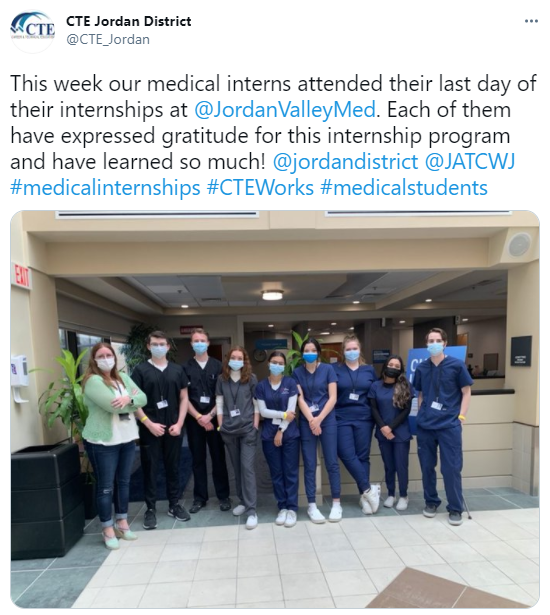 Using local examples can help explain the nuts and bolts of how CTE delivers success by making the connection between CTE and a specific career or industry, as well as highlighting partnerships with local colleges and employers that are recognizable to parents/guardians and learners.
Using local examples can help explain the nuts and bolts of how CTE delivers success by making the connection between CTE and a specific career or industry, as well as highlighting partnerships with local colleges and employers that are recognizable to parents/guardians and learners.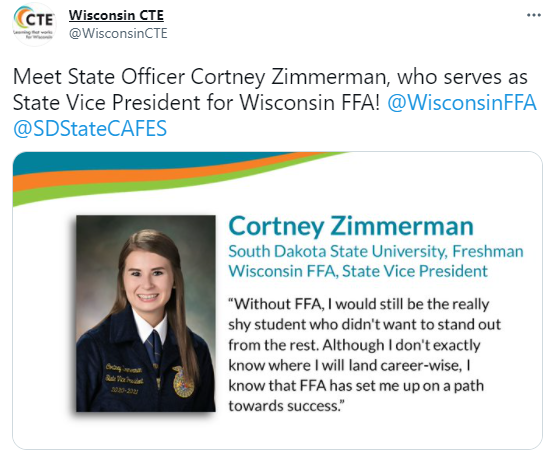 Wisconsin CTE showcased CTE to parents/guardians and learners by lifting up student success stories. One avenue to find compelling learner examples is to coordinate with statewide or local Career Technical Student Organizations (CTSOs) and gather testimonials, photos and stories to share on social media. This tweet focused on a local learner success story to create human interest in CTE. To help expand the reach of this tweet, Wisconsin CTE used relevant hashtags and tagged the state CTSO and the university the learner was attending. This type of post is a great way to highlight CTE and the many ways CTE benefits learners.
Wisconsin CTE showcased CTE to parents/guardians and learners by lifting up student success stories. One avenue to find compelling learner examples is to coordinate with statewide or local Career Technical Student Organizations (CTSOs) and gather testimonials, photos and stories to share on social media. This tweet focused on a local learner success story to create human interest in CTE. To help expand the reach of this tweet, Wisconsin CTE used relevant hashtags and tagged the state CTSO and the university the learner was attending. This type of post is a great way to highlight CTE and the many ways CTE benefits learners.  Meet Christina Koch! Christina serves in the role of Policy Associate for Advance CTE. Christina works on projects related to state policy, including the New Skills
Meet Christina Koch! Christina serves in the role of Policy Associate for Advance CTE. Christina works on projects related to state policy, including the New Skills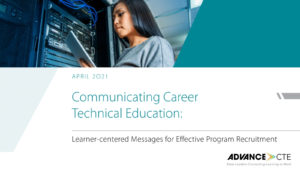 Today, Advance CTE released a
Today, Advance CTE released a  Additionally, 80 percent of families participating in CTE are satisfied with opportunities to jumpstart their postsecondary education in high school through opportunities to earn college credit and take advanced classes compared to just 60 percent of families not participating in CTE.
Additionally, 80 percent of families participating in CTE are satisfied with opportunities to jumpstart their postsecondary education in high school through opportunities to earn college credit and take advanced classes compared to just 60 percent of families not participating in CTE.
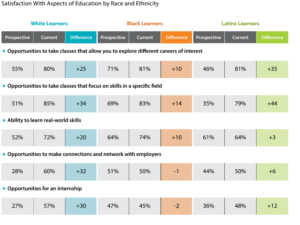


 State leaders can look to best practices in data visualization and accessibility to ensure their CTE reporting tools are widely accessible and equip users to make the most of the data.
State leaders can look to best practices in data visualization and accessibility to ensure their CTE reporting tools are widely accessible and equip users to make the most of the data. 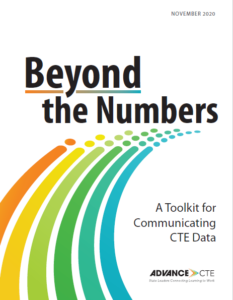 Effective data reporting, however, requires not just well-designed and accessible reports but also a strategy to build understanding among the general public and key stakeholders. What good is data if it isn’t used? Yet state CTE offices are asked to attend to multiple priorities — from program review to professional development to equity monitoring — and communicating CTE data all too often is moved to the backburner.
Effective data reporting, however, requires not just well-designed and accessible reports but also a strategy to build understanding among the general public and key stakeholders. What good is data if it isn’t used? Yet state CTE offices are asked to attend to multiple priorities — from program review to professional development to equity monitoring — and communicating CTE data all too often is moved to the backburner. 